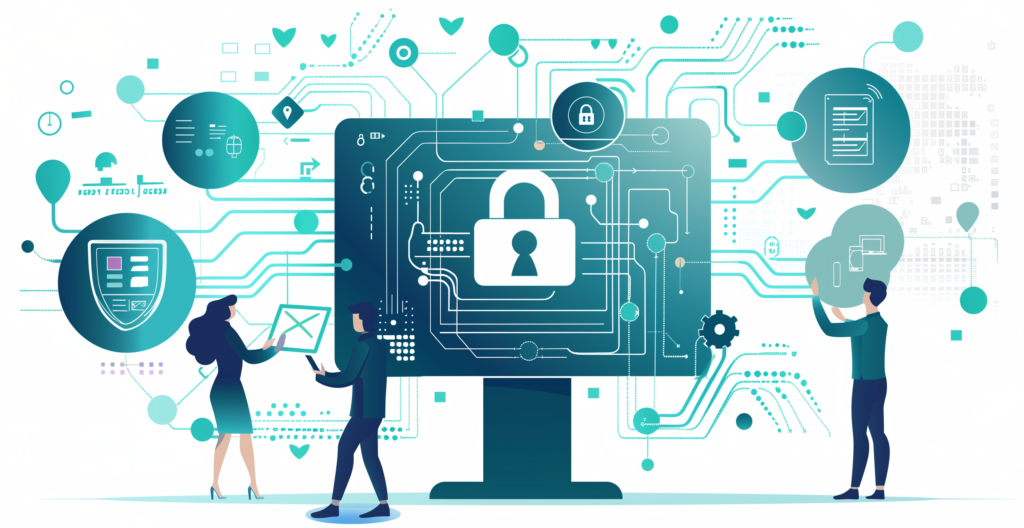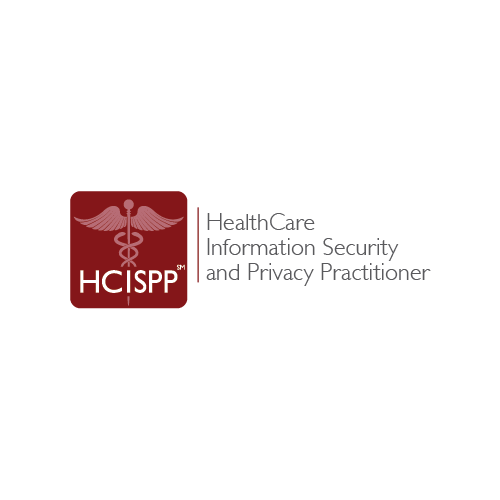
Healthcare organizations face ongoing cybersecurity challenges, and as technology continues to be integral to managing patient data, ensuring strong cybersecurity measures is crucial.
Here we outline recommended essential and enhanced cybersecurity goals aligned with the 2024 Healthcare and Public Health Sector-Specific Cybersecurity Performance Goals set forth by the Department of Health and Human Services (HHS). These goals help healthcare organizations safeguard their systems and protect patient data effectively.
Download Xpio’s Guide to Best Practices for Cybersecurity for Behavioral Health here.
Essential Goals for Cybersecurity
1. Mitigate Known Vulnerabilities
The first step toward robust cybersecurity is addressing known vulnerabilities within your IT infrastructure. Think of your IT infrastructure as the foundation of your healthcare organization—if there are cracks in this foundation, it becomes vulnerable to external threats. Regularly assessing and managing these vulnerabilities is like performing routine maintenance on a building to ensure it remains secure and resilient. This process involves:
- Host/Server-Based Scanning: Implement tools to scan and identify vulnerabilities in servers and endpoints.
- Proactive Measures Against Insider Threats: Educate employees on the dangers of social engineering and implement strict access controls.
Threats Mitigated:
- Ransomware
- Social Engineering
- Insider Threat
- Attacks on network connected devices
Actionable Steps:
- Conduct quarterly vulnerability scans.
- Implement an endpoint protection platform.
- Develop a vulnerability management plan to address identified issues promptly.
2. Email Security
Email continues to be a major gateway for cyberattacks, as hackers often use it to launch phishing scams, spoof emails, and spread other malicious activities. Imagine receiving an email that looks like it’s from a trusted source, such as a colleague or a bank, but it’s actually a cleverly disguised attempt to steal your sensitive information. This is why enhancing email security is critical. Strengthening email security involves several key steps:
- Email Protection Systems: Deploy tools to filter and block malicious emails.
- Multifactor Authentication (MFA): Require MFA for email access to add an extra layer of security.
- Workforce Education: Conduct regular training sessions to educate employees about recognizing and avoiding email-based threats.
Actionable Steps:
- Implement an email filtering solution.
- Mandate MFA for all email accounts.
- Schedule bi-annual cybersecurity awareness training for all staff.
3. Multifactor Authentication (MFA)
Multifactor Authentication (MFA) is a crucial security measure that enhances protection for sensitive systems and data by requiring multiple forms of verification. Think of it like securing a valuable item with both a lock and an alarm system—if one fails, the other still protects you. Implementing MFA reduces the risk of unauthorized access by adding an extra hurdle for potential attackers. This involves:
- Implementation of MFA: Require MFA for accessing critical systems, especially those accessible from the internet.
- Identity and Credential Management: Ensure all identities and credentials are issued, managed, and audited regularly.
Actionable Steps:
- Deploy MFA across all critical applications.
- Regularly audit and manage credentials.
- Educate users on the importance and use of MFA.
4. Basic Cybersecurity Training
Human error contributes to many cybersecurity breaches, often due to a lack of awareness about potential threats. Without proper training, employees might inadvertently click on phishing links, use weak passwords, or mishandle sensitive information. Providing basic cybersecurity training equips organizational users with the knowledge and skills needed to recognize and avoid these risks, fostering a more secure work environment. This involves:
- Training Programs: Develop training modules tailored to different roles within the organization.
- Role-Specific Training: Privileged users should receive additional training on their specific security responsibilities.
Actionable Steps:
- Create a comprehensive cybersecurity training program.
- Provide quarterly training sessions for all employees.
- Offer specialized training for IT staff and other privileged users.
5. Strong Encryption
Encrypting data both in transit and at rest is crucial to protecting sensitive information from unauthorized access. Imagine sending a confidential letter through the mail—without encryption, it’s like sending it without an envelope, exposing its contents to anyone who intercepts it. Encryption acts as a secure envelope, ensuring that even if the data is intercepted, it remains unreadable and safe. This involves:
- Data Encryption: Implement strong encryption protocols for data in transit and at rest to maintain confidentiality and integrity.
- Regular Audits: Conduct regular audits to ensure encryption standards are met and updated as necessary.
Actionable Steps:
- Use TLS/SSL for data in transit.
- Encrypt sensitive data stored on servers and backups.
- Regularly review and update encryption protocols.
6. Revoke Credentials Promptly
Revoking access credentials promptly for departing employees, contractors, and affiliates is vital to maintain security. When someone leaves the organization, their access to sensitive systems must be removed immediately to prevent unauthorized use. Failure to do so can leave the organization vulnerable to breaches and data theft by former insiders. Ensuring these credentials are swiftly revoked is a key part of a robust cybersecurity strategy. This involves:
- Deprovisioning Procedures: Establish and enforce procedures to promptly revoke access upon termination of employment or contracts.
- Regular Audits: Regularly audit access logs to ensure compliance with deprovisioning procedures.
Actionable Steps:
- Automate the deprovisioning process.
- Conduct monthly audits of access logs.
- Train HR and IT staff on deprovisioning procedures.
7. Basic Incident Planning and Preparedness
Being prepared for cybersecurity incidents is essential for healthcare organizations. Imagine if a hospital’s systems were suddenly compromised, disrupting patient care and jeopardizing sensitive information. Without a solid incident response plan, recovery could be slow and chaotic, leading to severe consequences. By planning ahead, healthcare providers can quickly address threats, minimize damage, and restore normal operations efficiently. This involves:
- Incident Response Plan: Develop and regularly update an incident response plan.
- Stakeholder Coordination: Ensure all relevant stakeholders are aware of their roles in the event of an incident.
Actionable Steps:
- Develop a comprehensive incident response plan.
- Conduct annual incident response drills.
- Establish a communication plan for incident response.
8. Unique Credentials
Using unique credentials within the organization’s network is essential for security. When each user has a distinct set of login details, it becomes easier to spot unusual activities and unauthorized access. This approach prevents attackers from moving freely within the network if they gain access. By isolating credentials, organizations can quickly identify and respond to threats, minimizing potential damage. This involves:
- Credential Management: Issue unique credentials for each user and regularly audit them.
- Network Segmentation: Implement network segmentation to limit access to sensitive areas.
Actionable Steps:
- Issue unique credentials for all users.
- Regularly review and update credential policies.
- Implement network segmentation to enhance security.
9. Separate User and Privileged Accounts
Separating user accounts from privileged accounts is crucial for minimizing the risk of unauthorized access to critical systems. Think of it as having different keys for different doors in a building: one for general areas and another for high-security rooms. By ensuring that only specific accounts have access to sensitive data and administrative functions, organizations can better protect against security breaches and internal threats. This involves:
- Secondary Accounts: Establish secondary accounts for administrative tasks.
- Access Controls: Implement strict access controls to manage privileged accounts.
Actionable Steps:
- Create separate accounts for administrative and user tasks.
- Use privileged access management tools.
- Conduct regular reviews of account permissions.
10. Vendor/Supplier Cybersecurity Requirements
Third-party vendors and suppliers often access sensitive systems and data, which can introduce significant cybersecurity risks. If a vendor’s security is compromised, it can create vulnerabilities in your organization. To protect against these potential threats, it’s crucial to implement strict cybersecurity requirements for all vendors and suppliers. By doing so, you can mitigate the risks they pose and ensure your data remains secure. This involves:
- Vendor Assessment: Regularly assess and monitor the cybersecurity practices of third-party vendors.
- Contractual Obligations: Include cybersecurity requirements in vendor contracts.
Actionable Steps:
- Develop a vendor assessment program.
- Include cybersecurity clauses in all vendor contracts.
- Regularly review and update vendor security policies.
Enhanced Goals for Cybersecurity
1. Asset Inventory
Keeping track of all IT assets is crucial for effective management and security in healthcare organizations. Imagine trying to protect a house without knowing all its entry points—it’s nearly impossible. Similarly, without a detailed inventory of hardware and software, identifying vulnerabilities and responding to threats becomes challenging. Ensuring every device and application is accounted for helps mitigate risks and enhances overall cybersecurity. This involves:
- Inventory Management: Use automated tools to discover and inventory all hardware and software assets.
- Regular Updates: Ensure the asset inventory is regularly updated to reflect changes.
Actionable Steps:
- Implement an IT asset management system.
- Conduct quarterly asset inventory reviews.
- Integrate asset inventory with security management tools.
2. Third-Party Vulnerability Disclosure and Incident Reporting
Establishing processes for vendors to report vulnerabilities and incidents promptly is crucial for maintaining a secure healthcare environment. When vendors can quickly report issues, healthcare organizations can address them before they escalate into major security breaches. This proactive approach ensures that potential threats are managed efficiently, protecting sensitive patient data and maintaining trust in the system. This involves:
- Vulnerability Disclosure: Require vendors to disclose known vulnerabilities.
- Incident Reporting: Ensure vendors have robust incident reporting mechanisms.
Actionable Steps:
- Develop a third-party vulnerability disclosure policy.
- Establish clear incident reporting procedures for vendors.
- Conduct regular reviews of vendor compliance.
3. Cybersecurity Testing
Regular cybersecurity testing is essential for healthcare organizations to identify and address vulnerabilities before they can be exploited by malicious actors. Just like regular health check-ups help catch potential issues early, cybersecurity tests such as penetration testing and attack simulations reveal weak points in your systems. These proactive measures ensure that defenses are strong and ready to withstand potential attacks. This involves:
- Penetration Testing: Conduct regular penetration tests to identify security weaknesses.
- Attack Simulations: Perform attack simulations to test response capabilities.
Actionable Steps:
- Schedule bi-annual penetration tests.
- Conduct annual attack simulations.
- Share findings with relevant stakeholders and take corrective actions.
4. Cybersecurity Mitigation
Effective cybersecurity mitigation is crucial for protecting sensitive data and maintaining system integrity. When vulnerabilities are discovered through penetration testing and attack simulations, they must be addressed promptly to prevent potential breaches. This proactive approach ensures that weaknesses are fixed before they can be exploited by cyber attackers. Quick and efficient mitigation efforts are essential to maintaining a secure healthcare environment and safeguarding patient information. This involves:
- Vulnerability Remediation: Establish processes to prioritize and remediate identified vulnerabilities.
- Continuous Improvement: Implement feedback loops to improve security measures continuously.
Actionable Steps:
- Develop a plan for addressing high-priority vulnerabilities.
- Assign responsibilities for remediation tasks.
- Regularly review and update mitigation strategies.
5. Detect and Respond to Relevant Threats and Tactics, Techniques, and Procedures (TTP)
Detecting and responding to relevant threats and TTPs is crucial for maintaining a secure healthcare environment. Just as vigilant monitoring and quick response are vital in patient care, they are equally important in cybersecurity. Organizations must be aware of potential threats and have the ability to detect malicious activities at endpoints. Securing entry and exit points of the network with robust endpoint protection ensures that any suspicious activity is quickly identified and mitigated. This involves:
- Threat Detection: Implement tools and protocols to detect threats at endpoints.
- Endpoint Protection: Secure entry and exit points to the network to prevent unauthorized access.
Actionable Steps:
- Deploy advanced endpoint detection and response (EDR) solutions.
- Regularly update and patch endpoint protection systems.
- Conduct regular threat intelligence briefings to stay informed about the latest TTPs.
- Train staff on recognizing and responding to endpoint security alerts.
6. Network Segmentation
Segmenting the network is like creating secure zones within a hospital, where only authorized personnel can access specific areas. This approach protects mission-critical assets, such as patient records and medical devices, by preventing unauthorized users from moving freely within the network. By limiting access to sensitive information and systems, network segmentation reduces the risk of widespread damage during a cyberattack. This involves:
- Implementation of Segmentation: Use firewalls and VLANs to segment the network.
- Regular Reviews: Regularly review and update network segmentation policies.
Actionable Steps:
- Implement network segmentation for critical systems.
- Conduct annual reviews of network segmentation.
- Update segmentation policies based on new threats.
7. Centralized Log Collection
Centralized collection of security logs is like having a comprehensive surveillance system for your network, allowing you to see and respond to potential threats quickly. By gathering all security logs in one place, you can easily monitor activities, detect unusual behavior, and take swift action to prevent breaches. This approach ensures you have a clear overview of your cybersecurity landscape. This involves:
- Log Management: Use centralized log management tools to collect and analyze logs.
- Incident Response: Integrate log management with incident response systems.
Actionable Steps:
- Deploy a centralized log management system.
- Regularly review log data for suspicious activities.
- Integrate log management with security information and event management (SIEM) systems.
8. Centralized Incident Planning and Preparedness
Centralized planning and preparedness for cybersecurity incidents ensure that all parts of an organization respond in a unified and efficient manner. Think of it like a fire drill—everyone knows their role and acts quickly to minimize damage. Regular practice and updates to the plan help keep everyone prepared for real emergencies, reducing chaos and downtime. This involves:
- Incident Response Plan: Develop a centralized incident response plan.
- Regular Drills: Conduct regular drills to test the plan.
Actionable Steps:
- Create a centralized incident response plan.
- Schedule semi-annual incident response drills.
- Update the plan based on drill outcomes and new threats.
9. Configuration Management
Maintaining secure configurations for all devices and systems is crucial to protecting against vulnerabilities. Think of it like ensuring all doors and windows in your house are securely locked to prevent intruders. Without proper configurations, your network is left open to cyber threats. This involves setting up and adhering to strict security guidelines, regularly updating systems, and conducting periodic audits to ensure compliance. This involves:
- Configuration Baselines: Establish and maintain secure configuration baselines.
- Regular Audits: Conduct regular audits to ensure compliance with configuration standards.
Actionable Steps:
- Implement a configuration management system.
- Develop secure configuration baselines.
- Conduct quarterly configuration audits.
Implementing these essential and enhanced cybersecurity goals is critical for healthcare organizations to protect their systems and patient data effectively. By following these actionable steps, organizations can build a strong cybersecurity posture that not only mitigates risks but also enhances their ability to respond to and recover from incidents. At Xpio Health, we are committed to partnering with healthcare organizations to achieve these goals and improve their overall cybersecurity resilience. Contact us today to learn how we can help you strengthen your cybersecurity and optimize your EHR systems.
How well is your organization prepared to handle cybersecurity threats and optimize EHR systems? Contact Xpio Health today for a consultation.
#HealthcareTech #Cybersecurity #EHROptimization #PeopleFirst #XpioHealth #HealthcareInnovation




